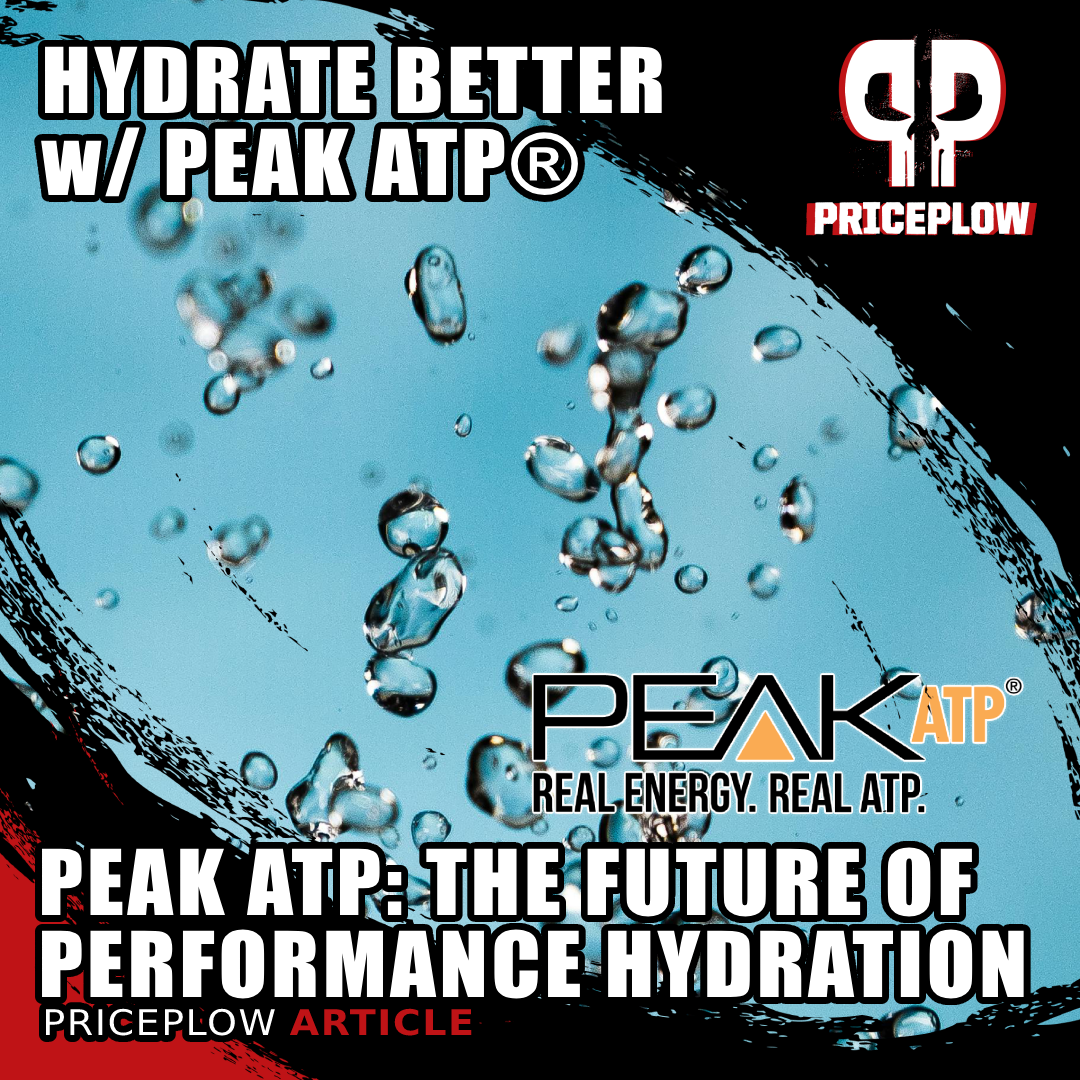
Hydration is evolving, and Peak ATP is leading the charge. Beyond basic electrolytes, it boosts blood flow, strength, endurance, and cognitive recovery. For premium performance, it’s the ultimate upgrade for next-gen hydration supplements.
The sports hydration market has become increasingly saturated, with countless brands offering their own electrolyte formulations. While these products differentiate themselves through varying ratios of sodium, potassium, magnesium, and other electrolytes, most lack research-backed performance claims beyond basic hydration support.
This is where Peak ATP from TSI Group enters the conversation. A patented form of disodium ATP, this ingredient not only contributes beneficial sodium (33mg per 400mg clinical dose) to hydration formulas but also provides substantial performance benefits backed by human research.
Applied Nutrition USA added Peak ATP to their AN Performance Electrolytes Hydration supplement, and this article details why it was such a great idea.
Beyond Basic Hydration: Performance Claims That Matter
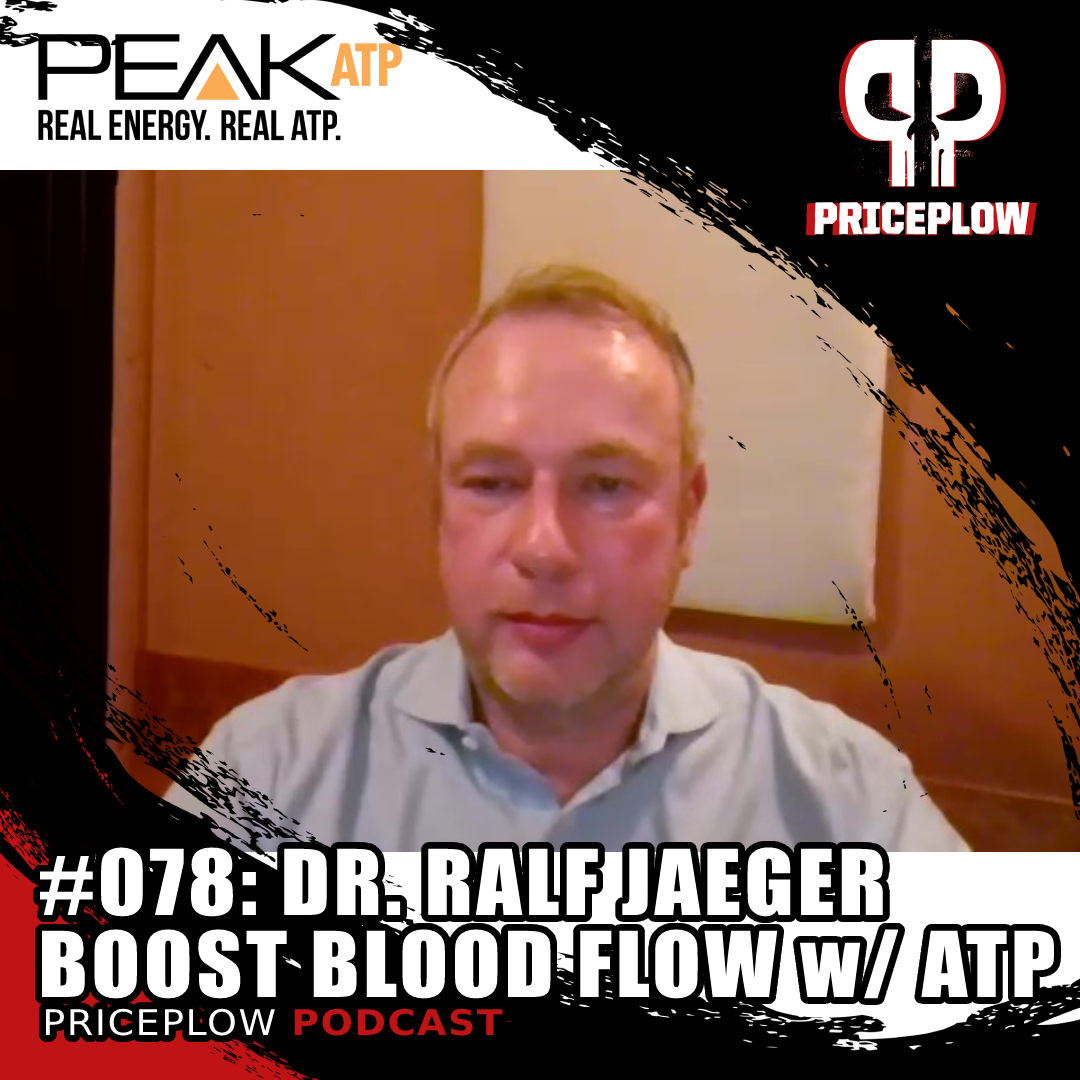
In Episode #078 of the PricePlow Podcast, Dr. Ralf Jaeger dove into ATP, explaining how supplementing Peak ATP improves workout performance.
Most hydration supplements rely on basic electrolytes and commoditized ingredients like taurine. While electrolyte replenishment is crucial, today's performance-focused consumers and athletes demand more from their supplements. Adding Peak ATP to hydration formulas provides several research-backed benefits that align perfectly with athletic performance:
- Improved Blood Flow[1] and Nutrient Delivery
- Enhanced Power Output and Strength[2]
- Increased Total Training Volume[2]
- Better Post-Exercise Cognitive Function[3]
As Dr. Ralf Jaeger explained at the 11:50 mark of Episode #078 of the PricePlow Podcast, Peak ATP's blood flow benefits are particularly noteworthy. The ingredient works through a fascinating mechanism where ATP triggers vasodilation and enhanced nitric oxide production, improving nutrient and oxygen delivery to working muscles.
The Triple Mechanism of Action
Peak ATP's effectiveness stems from what TSI Group calls its "Triple Mechanism of Action":
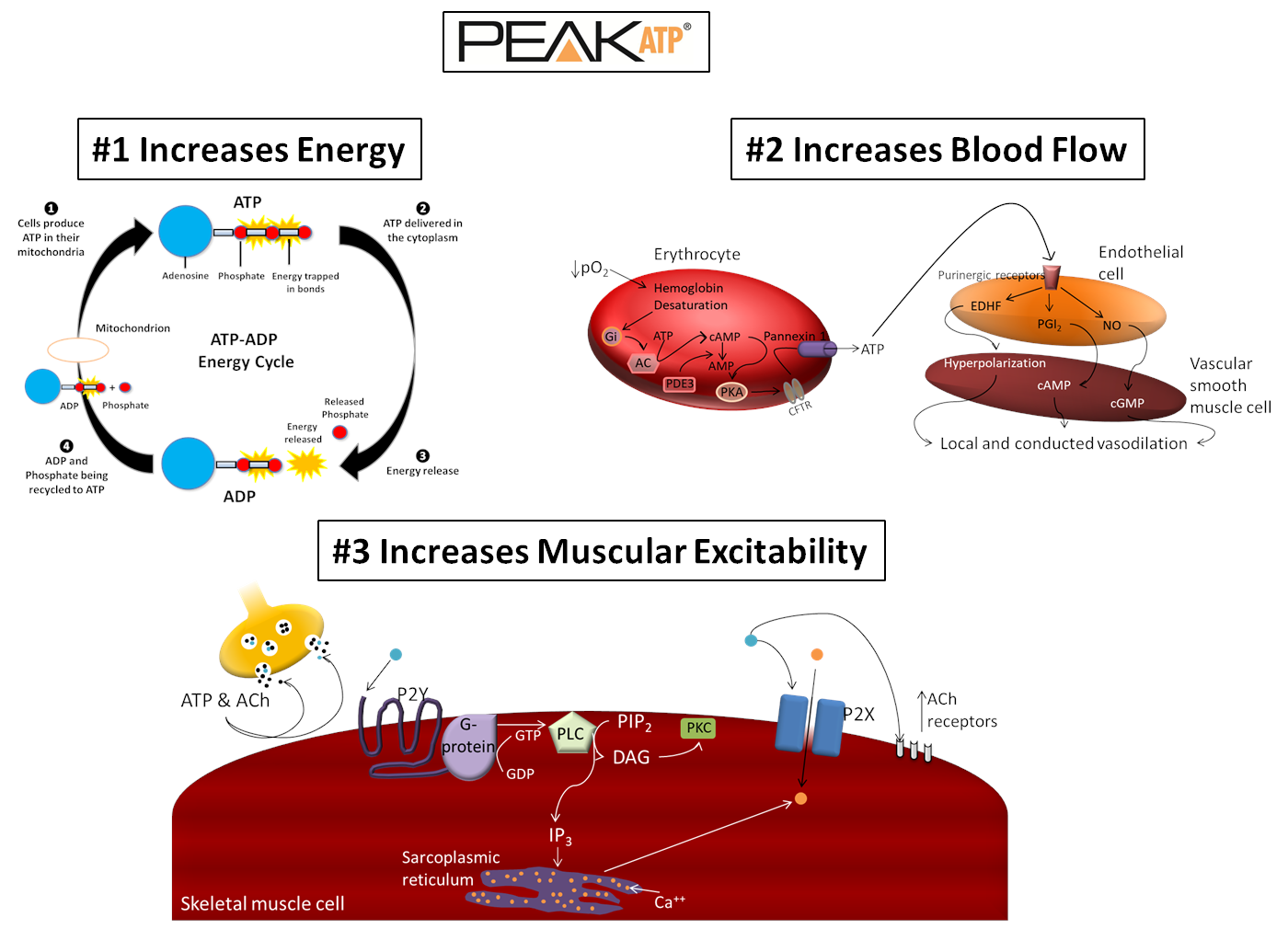
The PEAK ATP Triple Mechanism of Action, and much of it revolves around the increase in blood flow it supports. Modified image courtesy of TSI Group and PricePlow
- Improved blood flow through ATP-mediated vasodilation
- Enhanced muscular excitability and contraction
- Support for anabolic signaling pathways
This comprehensive approach makes it an ideal addition to hydration formulas, where improved blood flow can enhance the delivery and utilization of the electrolytes and other active ingredients. Additionally, these are benefits that athletes who use hydration formulas are generally seeking anyway.
Research-Backed Benefits for Athletes
Recent research has demonstrated Peak ATP's broad range of benefits that would appeal to hydration supplement users:
-
Enhanced Physical Performance
A landmark study showed that 400mg of Peak ATP significantly increased total body strength, vertical jump power, and muscle thickness in resistance-trained men.[2] This wasn't just a marginal improvement – subjects taking Peak ATP gained significantly more strength across all lifts compared to placebo.
-
Cognitive Function Preservation
A 2023 study published in Frontiers in Nutrition revealed another compelling benefit: Peak ATP helps prevent the temporary decline in cognitive function that typically follows intense exercise.[3] This is particularly relevant for athletes and competitors who need to maintain mental sharpness during demanding training sessions or competitions.
-
A massive body of research
Prior to the 2023 cognitive study cited above,[3] one research review summarized the impressive amount of data up to 2021:[4]
The available literature on ATP disodium when provided in a dose of at least 400 mg approximately 30 min before a workout or 20–30 min before breakfast on non-exercise days provides insight into its potential to reduce fatigue (Purpura et al., 2017,[5] Rathmacher et al., 2012[6]), increase strength and power (Wilson et al., 2013[2]), improve body composition (Hirsch et al., 2017[7], Wilson et al., 2013[2]), maintain muscle health during stress (Long and Zhang, 2014,[8] Wilson et al., 2013[2]), increase recovery and reduce pain (de Freitas et al., 2018[9], Khakh and Burnstock, 2009,[10] Wilson et al., 2013[2]). Additionally, other literature indicates a role for ATP in improving cardiovascular health (Hirsch et al., 2017,[7] Ju et al., 2016,[11] Rossignol et al., 2005[12]).[4]
Aside from creatine and protein, how many sports nutrition ingredients can claim that much research?
For a deep dive into the research behind Peak ATP, see our comprehensive guide "PEAK ATP: The Ultimate Guide to Disodium ATP Supplements" and our coverage of the cognitive study in "Nootropic Study: PEAK ATP Improves Cognitive Performance After Intense Exercise". And be sure to listen to our podcast, Episode #078 with Dr. Ralf Jaeger.
Perfect Fit for Hydration Formulas
Peak ATP integrates seamlessly into hydration supplements for several reasons:
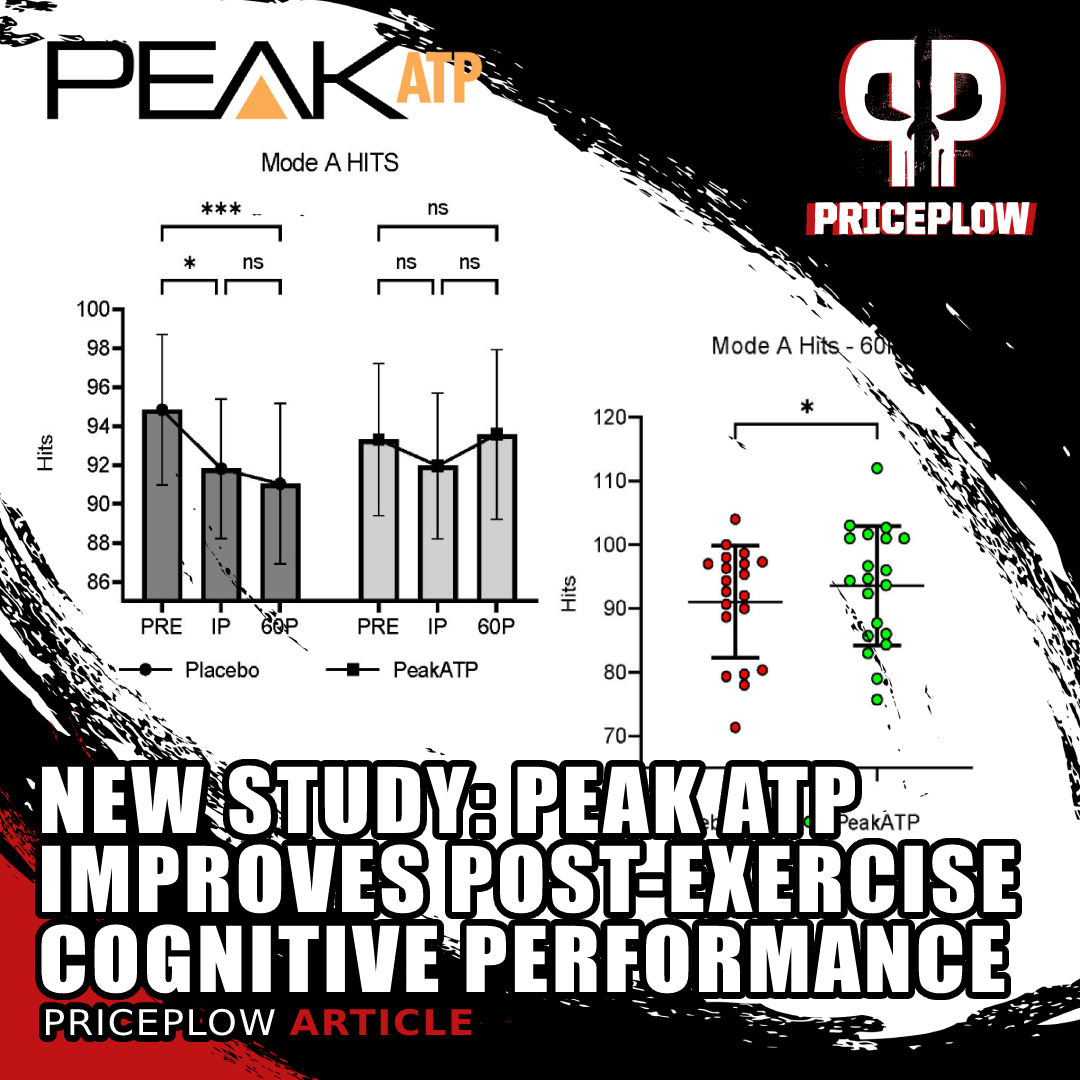
Exercise can create a feeling of mental fatigue by eliciting deficits in attention and processing speed. A study published in 2023 showed that PEAK ATP® helps mitigate deficits in several cognitive tasks following exercise.
- Complementary Electrolyte Profile: As disodium ATP, it contributes to the product's electrolyte matrix while providing additional performance benefits.
- Synergistic Effects: The blood flow enhancement can potentially improve the delivery and utilization of other ingredients in the formula.
- Research-Backed Claims: Provides legitimate performance claims that most basic hydration formulas cannot make.
- Premium Positioning: While Peak ATP may increase formula costs, it enables brands to justify premium pricing through tangible, research-supported benefits.
A New Standard in Performance Hydration
The addition of Peak ATP transforms basic hydration supplements into comprehensive performance formulas. While standard electrolyte blends focus solely on hydration, Peak ATP-enhanced formulas can legitimately claim to:
- Support blood flow and nutrient delivery
- Enhance strength and power output
- Maintain cognitive function during intense training
- Improve overall training performance
This breadth of benefits allows brands to differentiate their products in an increasingly crowded market while providing real value to consumers.
The Future of Performance Hydration
As the sports nutrition market continues to evolve, formulators need innovative ways to differentiate their products. Peak ATP offers a research-backed solution that elevates hydration supplements beyond basic electrolyte replacement to true performance enhancement.
For formulators and brands looking to create premium performance hydration products, Peak ATP provides the scientifically-validated benefits needed to stand out in a saturated market. That's exactly what we were thinking when we suggested its inclusion in AN Performance's Electrolytes Hydration formula -- and there are still more ways to do it with different mineral ratios.
Contact us if you're interested in our next Peak ATP formula, and sign up for our TSI Group and Peak ATP news alerts to stay informed about new research and product developments:
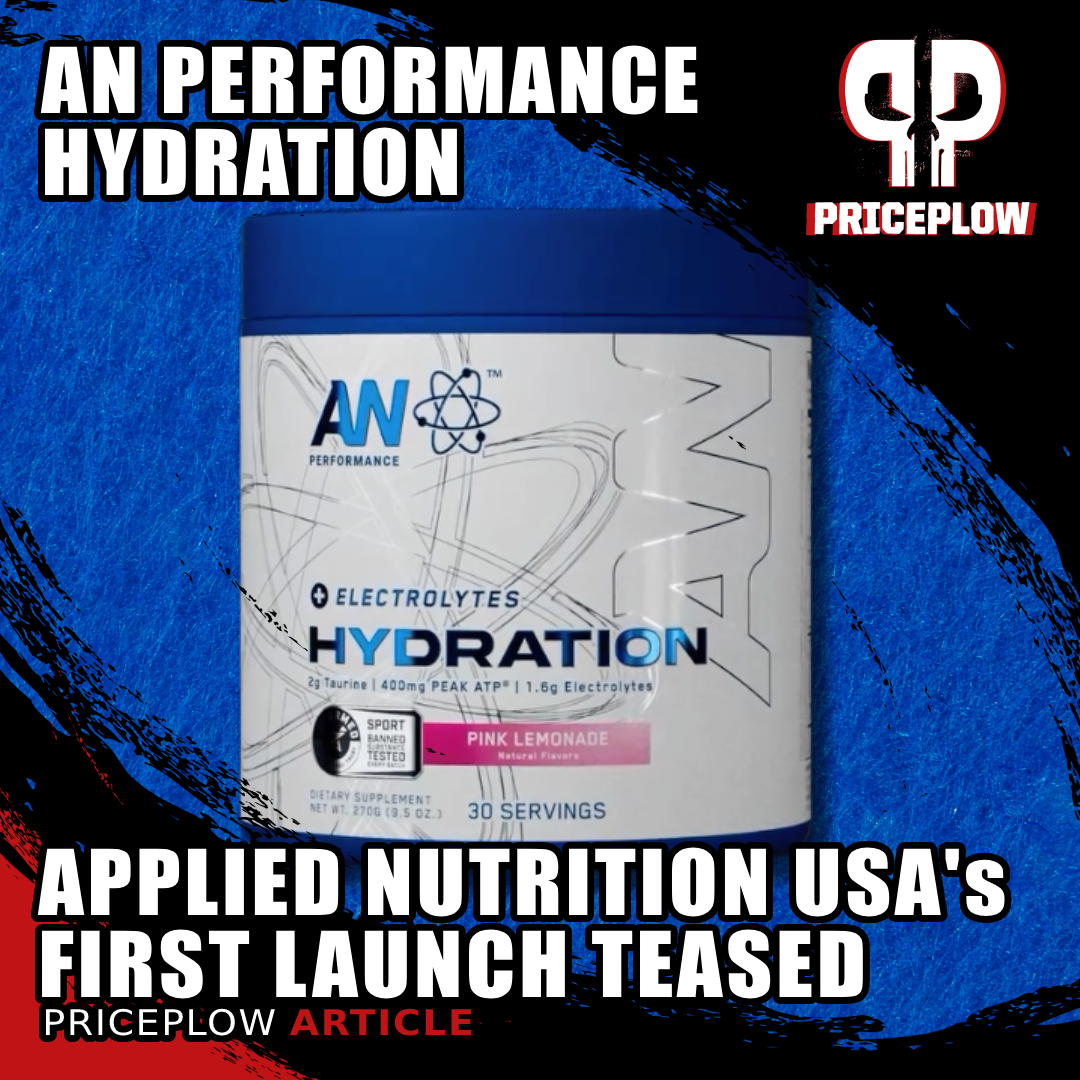
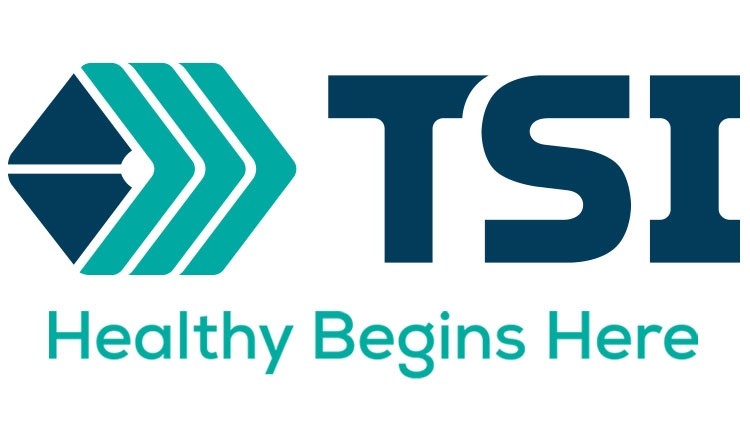


Comments and Discussion (Powered by the PricePlow Forum)